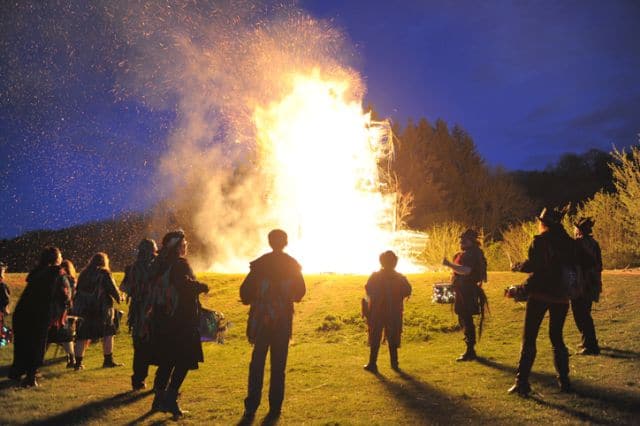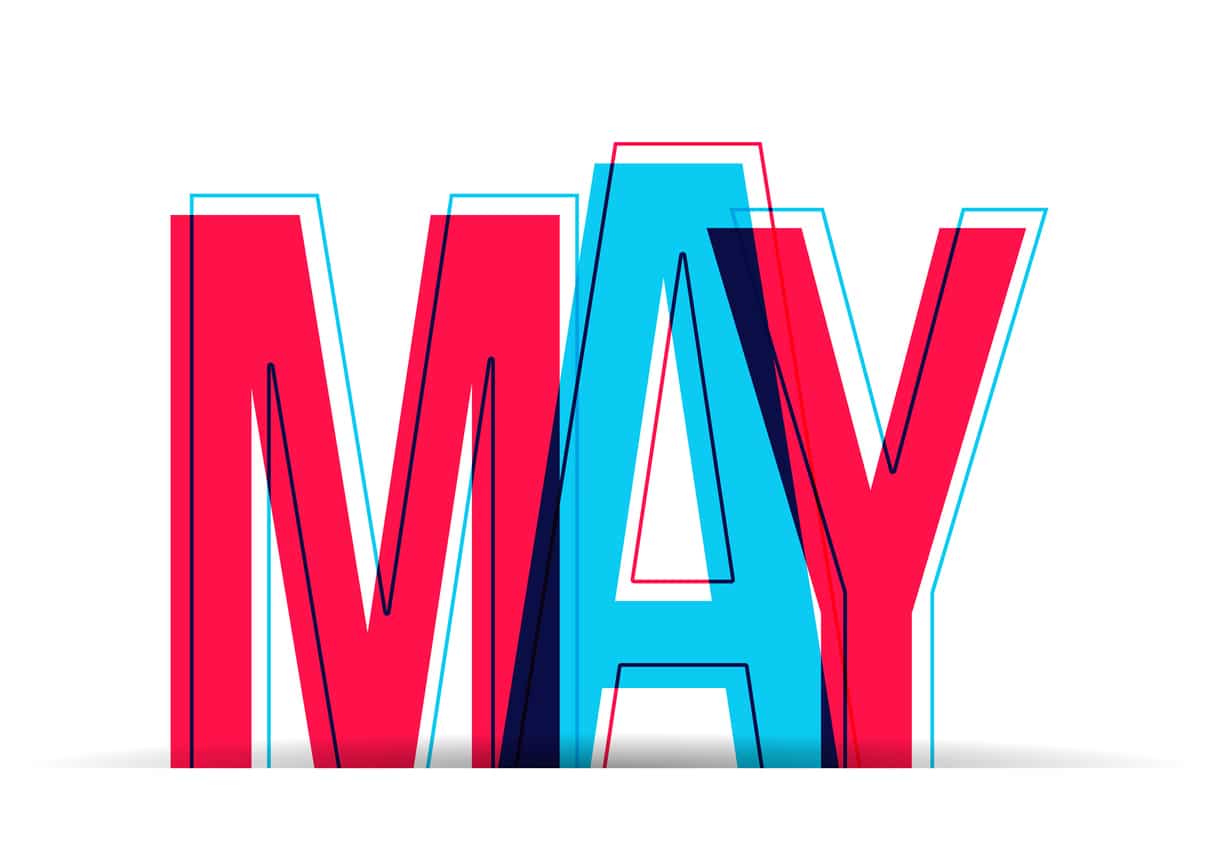May Day
May Day is a May 1 celebration with a long and varied history, dating back millennia. Throughout the years, there have been many different events and festivities worldwide, most with the express purpose of welcoming in a change of season (spring in the Northern Hemisphere). In the 19th century, May Day took on a new meaning, as an International Workers’ Day grew out of the 19th-century labor movement for worker’s rights and an eight-hour workday in the United States. May Day 2021 will be celebrated on Saturday, May 1, 2021.
Origins of May Day: Beltane

The Celts of the British Isles believed May 1 to be the most important day of the year, when the festival of Beltane was held.
This May Day festival was thought to divide the year in half, between the light and the dark. Symbolic fire was one of the main rituals of the festival, helping to celebrate the return of life and fertility to the world.
When the Romans took over the British Isles, they brought with them their five-day celebration known as Floralia, devoted to the worship of the goddess of flowers, Flora. Taking place between April 20 and May 2, the rituals of this celebration were eventually combined with Beltane.
May Day Maypole Dance
Another popular tradition of May Day involves the maypole. While the exact origins of the maypole remain unknown, the annual traditions surrounding it can be traced back to medieval times, and some are still celebrated today.

Villagers would enter the woods to find a maypole that was set up for the day in small towns (or sometimes permanently in larger cities). The day’s festivities involved merriment, as people would dance around the pole clad with colorful streamers and ribbons.
Historians believe the first maypole dance originated as part of a fertility ritual, where the pole symbolized male fertility and baskets and wreaths symbolized female fertility.
The maypole never really took root in America, where May Day celebrations were discouraged by the Puritans. But other forms of celebrations did find their way to the New World.
During the 19th and 20th centuries, May Basket Day was celebrated across the country, where baskets were created with flowers, candies and other treats and hung on the doors of friends, neighbors and loved ones on May 1.
International Workers’ Day

The connection between May Day and labor rights began in the United States. During the 19th century, at the height of the Industrial Revolution, thousands of men, women and children were dying every year from poor working conditions and long hours.
In an attempt to end these inhumane conditions, the Federation of Organized Trades and Labor Unions (which would later become the American Federation of Labor, or AFL) held a convention in Chicago in 1884. The FOTLU proclaimed “eight hours shall constitute a legal day’s labor from and after May 1, 1886.”
The following year the Knights of Labor—then America’s largest labor organization—backed the proclamation as both groups encouraged workers to strike and demonstrate.
On May 1, 1886, more than 300,000 workers (40,000 in Chicago alone) from 13,000 business walked out of their jobs across the country. In the following days, more workers joined and the number of strikers grew to almost 100,000.
In the Soviet Union and in the Eastern-bloc countries the day became a significant holiday with high-profile parades.
May Day Today
Today, May Day is an official holiday in 66 countries and unofficially celebrated in many more, but ironically it is rarely recognized in the country where it began, the United States of America.
With the breakup of the Soviet Union and the fall of communist governments in eastern Europe in the late 20th century, large-scale May Day celebrations in that region declined in importance. In dozens of countries around the world, however, May Day has been recognized as a public holiday, and it continues to be celebrated with picnics.
Mayday, Mayday!
What does May Day have to do with the international distress call, “Mayday, Mayday, Mayday”? Nothing, as it turns out. The code was invented in 1923 by an airport radio officer in London. Challenged to come up with a word that would be easily understood by pilots and ground staff in case of an emergency, Frederick Mockford coined the word “mayday” because it sounded like “m’aider,” a shortened version of the French term for ” come and help me.”
source: History.com; Britannica.com
Vocabulary
| with the express purpose of | azzal az egyértelmű/ világos céllal |
| Hemisphere | Félteke |
| to take on | felvenni |
| to divide sg in half | ketté osztani |
| fertility | termékenység |
| to take over | átvenni a hatalmat |
| to devote to | szentelni valaminek |
| worship | ima |
| maypole | májusfa |
| to remain | maradni |
| to trace back | visszavezetni |
| to set up | felállítani |
| permanently | tartósan/ állandóan |
| merriment | vidámság |
| to clad with | beborítani valamivel |
| streamers | lobogók |
| wreaths | koszorúk |
| to take root in | gyökeret verni |
| to discourage | ellenezni |
| treats | csemegék |
| at the height of | valami csúcsán |
| attempt | kísérlet/ próbálkozás |
| inhumane | embertelen |
| Federation | Szövetség |
| to proclaim | kinyilvánítani |
| to constitute | kinevezni |
| to encourage | ösztönözni |
| high-profile parades | nagy horderejű felvonulások |
| unofficially | nem hivatalosan |
| to recognize | elismerni |
| breakup | szakítás/ valami vége |
| to decline | hanyatlani |
| dozens | több tucatnyi |
| distress call | vészjelzés |
| to turn out | kiderülni |
| to invent | feltalálni |
| to come up with | előhozakodni valamivel |
| ground staff | földi személyzet |
| case of an emergency | vészhelyzet esetén |
| to coin | alkotni |






